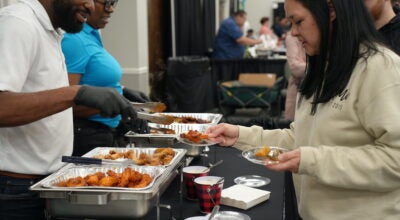Shelby County still dealing with severe drought
Published 5:41 pm Thursday, August 29, 2019
By SCOTT MIMS / Staff Writer
Shelby County, particularly the area west of the Interstate 65 corridor, continues to be among the areas most affected by the recent drought.
The latest version of the U.S. Drought Monitor released Thursday morning showed a large swath of Shelby as currently in the D2, or severe drought, intensity level. The intensity rankings measure from D0 (abnormally dry) to D4 (exceptional drought).
“About 50 percent of Shelby’s area is still in a severe drought,” said Alex Sizemore, meteorologist with the National Weather Service of Birmingham. “Looking at precipitation levels of the past several weeks, even with the recent rainfall we’ve gotten, we’re still in a deficit.”
Sizemore explained that while the rainfall was beneficial, it has not been enough to bring soil moisture levels back to where they need to be. As the soil dries out, certain conditions can cause a drought to “feed back” on itself because there is not adequate moisture in low levels for summer showers to develop.
According to the NWS, Calera received 2.73 inches of rainfall in July, down from the July average of 4.6 inches.
The chances of rainfall over the next several days will be contingent upon the path of Hurricane Dorian, Sizemore said.
“In terms of drought conditions, I would believe that we would continue to persist as is unless we get more rainfall than expected in the next seven days,” Sizemore said Thursday, adding that long-term forecasts are more optimistic, showing a chance for potential improvement by November.
For one local farmer, Phillip Barber of Harpersville, the rain has come too little too late for corn and cotton crops. He predicted a 40-percent yield loss with cotton and indicated corn would fare even worse.
“Now that we’re getting rain, the cotton has accelerated its development,” Barber said, explaining how the cotton plant has a built-in clock that works off of heat units. Now the bolls are trying to open before they are mature enough, and once they reach the “cracking” stage, the rain sits in the boll and sours.
“Basically, it sits there and rots, and I’ll never be able to harvest it,” he said. “It’s just been so dry this year at the wrong time. There has been no rain when we really needed it.”
The drought has also interfered with corn pollination, resulting in shorter ears. That means a late harvest for farmers like Barber, who would have normally started harvesting about two weeks ago.
He said 2019 has been one of the worst years for drought since 1995.
“The past two years have been really good. ’95 was a really bad year,” he said.
Barber operates the family farm with his brother, Jimmy, and son-in-law, Nathan Riddle.









